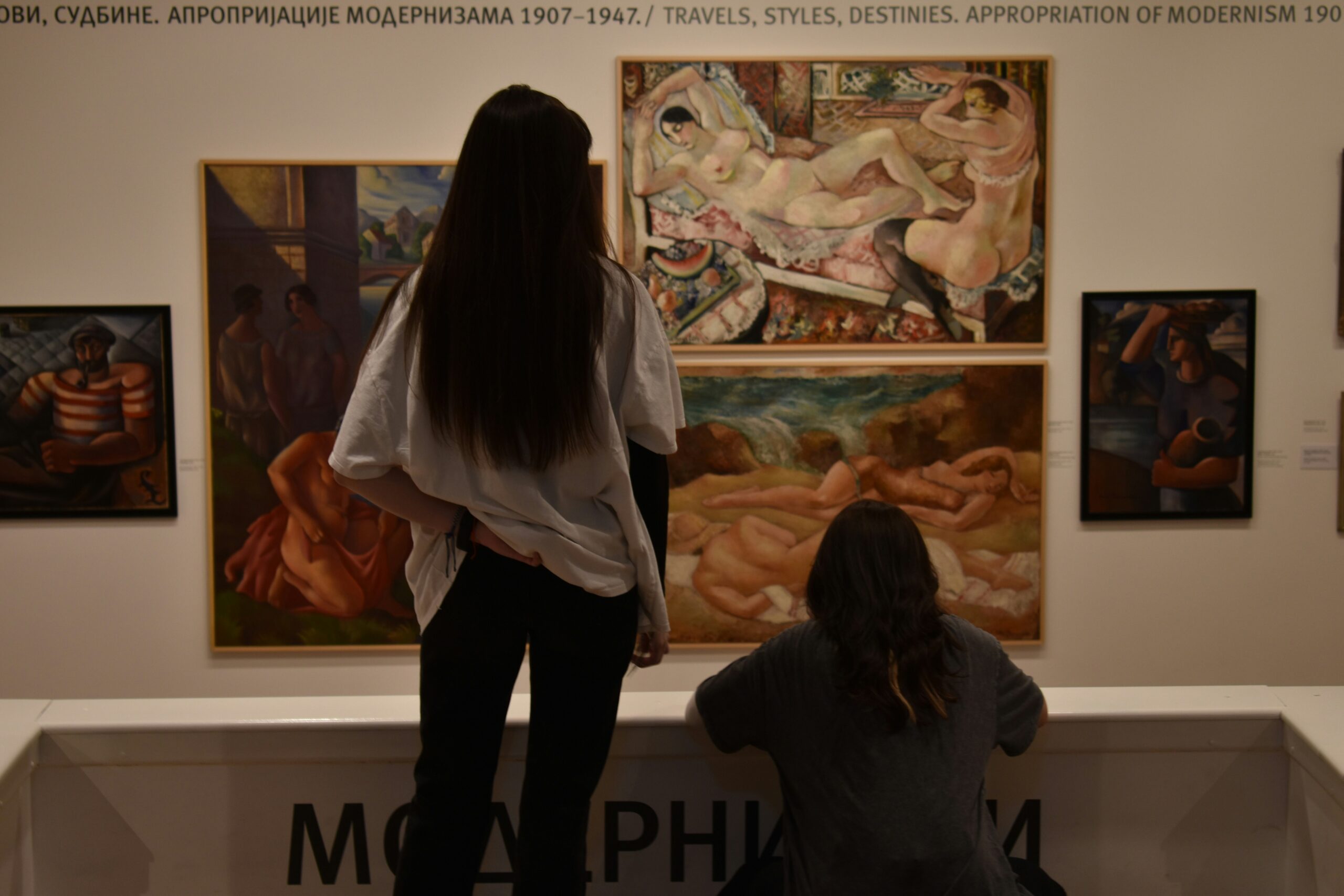In a world saturated with images—scrolling past us in endless feeds, advertisements, and digital noise—it’s easy to look without truly seeing. Yet, art invites us to slow down. To look deeper. To ask questions. To feel. This is the essence of art appreciation—a practice that transcends aesthetic judgments and enters the realm of thoughtful connection.
Whether you’re standing before a Renaissance masterpiece, a minimalist installation, or a graffiti-covered wall, appreciating art is not about having the “right” knowledge, but about cultivating awareness, curiosity, and empathy. This article explores the foundations, methods, and transformative potential of art appreciation, guiding both newcomers and seasoned admirers toward a more profound relationship with visual culture.
What Is Art Appreciation?
Art appreciation is the ability to understand, interpret, and value art beyond surface-level judgments. It’s not about liking or disliking a work but about exploring why it was created, what it communicates, and how it fits into a broader historical, cultural, or emotional context.
At its core, art appreciation involves three key components:
1. Observation – Looking closely at the elements: color, line, texture, composition.
2. Interpretation – Asking what the work might mean or represent.
3. Connection – Relating the work to personal experience, cultural context, or emotional response.
Through these steps, a viewer becomes an active participant in the conversation between artist and audience.
The Evolution of Looking
Our modern world often trains us to consume visuals quickly and dismissively. Yet, throughout history, viewing art was a deliberate act:
In ancient temples, art was spiritual—a means to connect with the divine.
In the Renaissance, it was a celebration of human potential and intellect.
In modern times, it challenges norms, provokes thought, or plays with ambiguity.
To appreciate art today is to reclaim the power of attention. Instead of glancing and moving on, we pause. We look with intention.
The Language of Art: Formal Elements and Principles
Before diving into meaning, it’s helpful to understand how an artwork is constructed. The formal elements of art serve as the visual vocabulary:
Line – Directs the eye, creates rhythm, defines form.
Shape – Organic or geometric forms that create structure.
Color – Evokes mood, creates emphasis, defines space.
Texture – Suggests touch, enhances realism or abstraction.
Space – Depth, perspective, or flatness within a composition.
Value – Lightness or darkness, creating contrast and dimension.
These elements are organized through principles of design like:
Balance – Symmetry or asymmetry that affects visual stability.
Contrast – Use of differences to create interest.
Unity and Harmony – Cohesion within the artwork.
Emphasis – Focal points that draw attention.
Movement and Rhythm – Guides how the eye travels across the work.
By analyzing these aspects, we begin to see art as a constructed language, not just decoration.
Reading the Layers: Subject, Context, and Symbolism
Beyond form, art carries meaning—sometimes overt, sometimes hidden. To decode it, we consider three major layers:
1. Subject Matter
What is depicted? This can be:
Representational – People, landscapes, events.
Abstract – Emotions or ideas without literal form.
Non-objective – No recognizable subject, focused on pure form or color.
2. Historical and Cultural Context
When and where was the work created?
A Japanese ukiyo-e print from the 18th century carries different values and aesthetics than a postmodern installation from New York.
Understanding the social, political, or personal circumstances of the artist can radically shift how we interpret the work.
3. Symbolism and Allegory
Artists often embed symbols—objects or colors that carry layered meaning.
A skull may represent mortality.
A mirror could suggest vanity or introspection.
Red might signal love in one culture, danger in another.
Appreciating art means tuning in to these subtleties and being willing to learn from different lenses.
The Role of Emotion
Art is not just for the mind—it speaks to the heart. Emotional response is a valid and essential part of art appreciation.
You may feel awe at a cathedral ceiling.
Sorrow when viewing a painting of war or grief.
Delight in the playful energy of street art.
These reactions are not accidents; they’re part of what makes art powerful. Instead of suppressing emotions in favor of analysis, appreciation integrates both.
Common Misconceptions About Art Appreciation
“I don’t know enough about art to appreciate it.”
Truth: Appreciation starts with curiosity, not knowledge. The best questions come from wonder, not expertise.
“If I don’t like it, it’s bad art.”
Truth: Some art is meant to discomfort, confront, or challenge norms. Disliking a work can be the beginning of a deeper engagement, not the end.
“Abstract art doesn’t mean anything.”
Truth: Abstract works often explore inner states, metaphysical ideas, or formal innovation. Meaning exists—but it may not be verbal or literal.
Exercises in Seeing: How to Appreciate Art Actively
To train your eyes and mind, try these practices:
1. The Slow Look
Spend at least 10 minutes with a single artwork. Observe how your perception evolves. What do you notice in minute 8 that you missed in minute 1?
2. Describe Before You Interpret
Write down what you see: colors, shapes, materials. Only then ask: what might this mean?
3. Ask Guiding Questions
What draws my attention first?
What emotions does this evoke?
What do I think the artist was trying to communicate?
How does the artwork relate to the world today?
4. Compare and Contrast
Take two works from different periods or cultures. Compare how they handle the same theme: love, death, power, beauty.
5. Visit in Different Moods
Revisit a work of art in different emotional states or seasons of life. Notice how your interpretation changes.
Digital Age and Art Accessibility
Today, museums are not the only way to experience art. Platforms like Google Arts & Culture, virtual exhibitions, and social media have made art more accessible than ever.
However, the screen may also distance us from the material reality of artworks—the texture of brushstrokes, the scale of a sculpture, the light in a gallery.
Whenever possible, combine digital access with in-person encounters. Seeing a Van Gogh in a book is different from standing before it and feeling the pulse of the artist’s hand.
Contemporary Art and Expanding Boundaries
Modern and contemporary art often resist easy interpretation. Yet, they are rich terrain for appreciation.
A room filled with sound and light might seem baffling at first—but could be commenting on technology, memory, or human presence.
A performance art piece might be a critique of social systems or a celebration of identity.
To appreciate contemporary art, let go of the need to “get it” immediately. Embrace openness, discomfort, and dialogue.
Art and Empathy
Perhaps the most powerful function of art appreciation is the cultivation of empathy.
When we view art from different cultures, we engage with worldviews not our own.
When we reflect on an artist’s struggle, we connect across time and geography.
When we appreciate without needing to agree or own, we learn the value of being with difference.
Art teaches us to see the world through other eyes—an act that has never been more needed in a divided world.
Conclusion
Art appreciation is not a luxury or elitist pursuit—it’s a human capacity that enriches our lives, broadens our minds, and softens our hearts. It teaches us to be present, to listen, to question, and to feel.
Whether you’re in a museum, scrolling online, or watching a child draw with crayons, you are engaging with the universal language of visual expression. The art of seeing is, in the end, the art of living more fully.
So take a moment. Slow down. Let the artwork speak—and listen not just with your eyes, but with your whole being.




